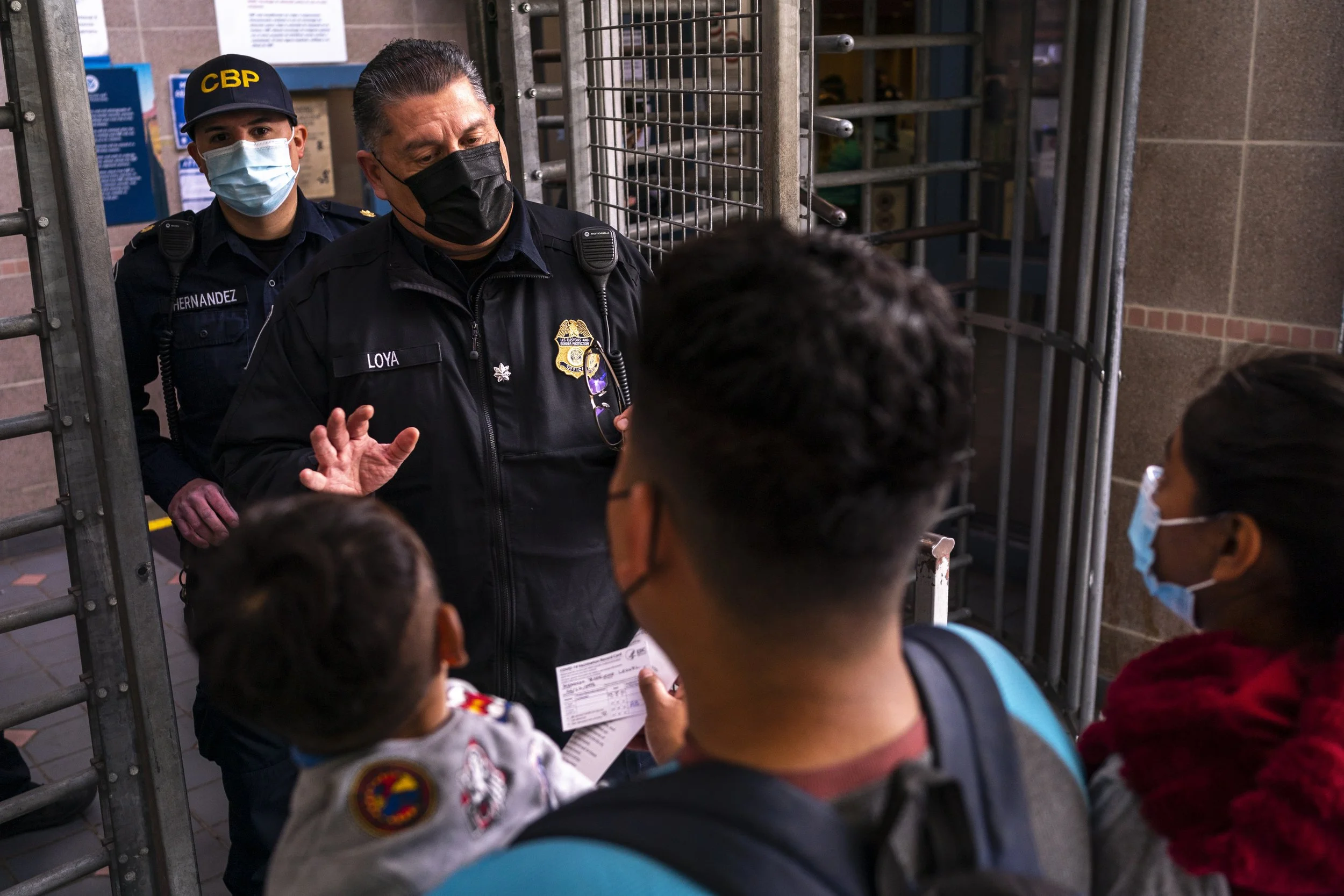
Nancy and Leo, along with their two children Alexander, 3, and Gael, 1, present their COVID-19 vaccination cards while speaking with a Border Patrol officer to seek asylum at the U.S. Customs and Border Protection - Dennis DeConcini Port of Entry on Nov. 8, 2021, in Nogales, Mexico. The family, which has faced threats and harassment in Guerrero, Mexico, asked to omit their last names. U.S. border officials rejected the family's claim for asylum due to Title 42, a program which prohibit the entry of persons who potentially pose a health risk by being subject to previously-announced travel restrictions.

Yuma County Sheriff Leon N. Wilmot holds discarded belongings of migrants he found on the floor in front of a border gap covered by shipping containers and razor wire near the Morelos Dam covered by shipping containers on Thursday, September 8, 2022, in Yuma. Wilmot was at the area which experiences daily migrant crossings for a press conference by Arizona Gov. Doug Ducey, during which Ducey and Wilmot accused migrants of smuggling fentanyl into the U.S. Migrants in this the Yuma sector have tended to cross over the shipping containers or in gaps by indigenous tribal land and turn them selves into Border Patrol to be processed for asylum.

Pastor Hector Ramirez leads a prayer to protect a group of migrants on their journeys after they arrived to Iglesia Cristiana El Buen Pastor on Thursday, Dec. 22, 2022, in Mesa. The group of migrants from various Central and South American countries were transported to the church where they were helped to get to relatives in various parts of the U.S.
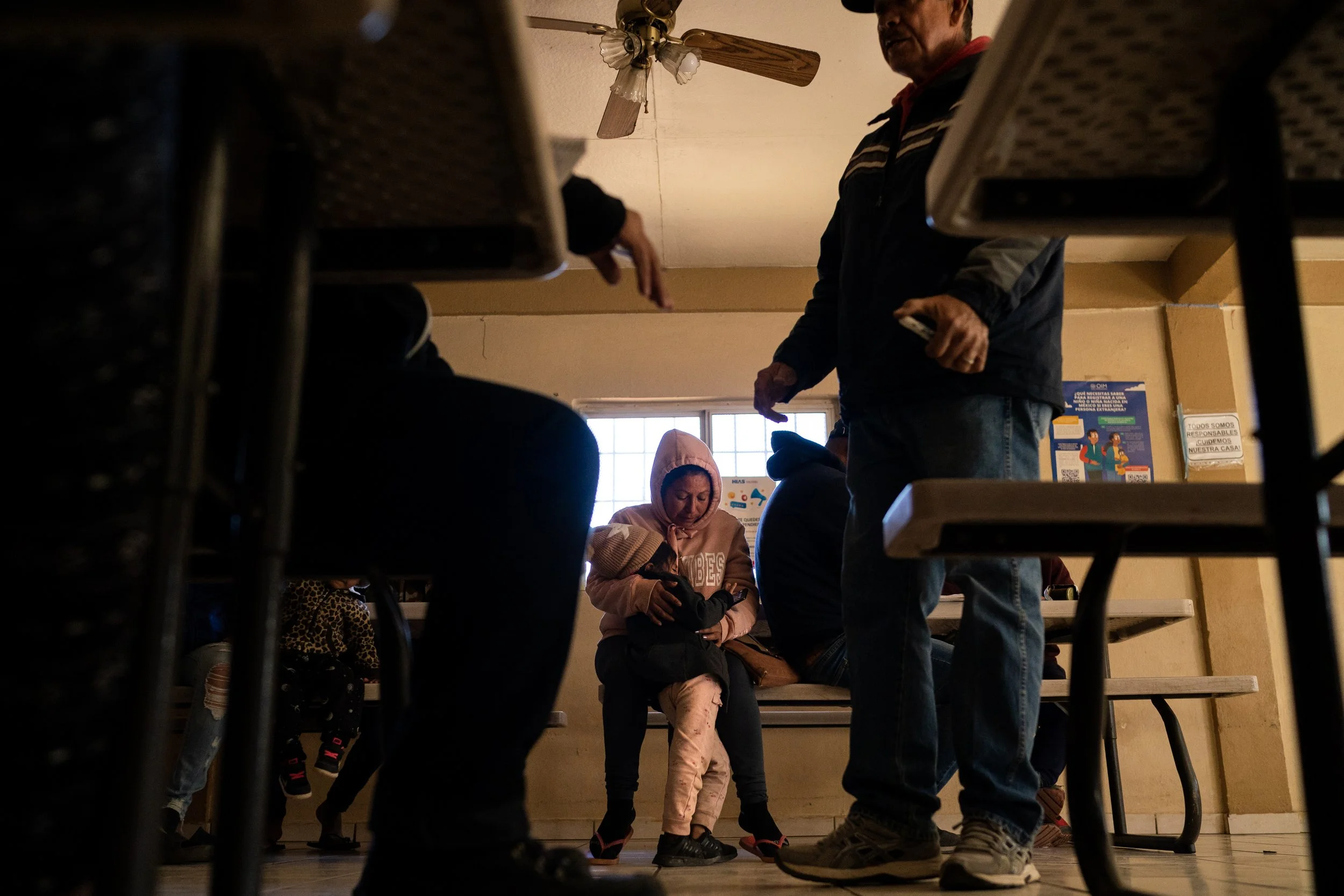
A migrant mother holds her daughter, who’s names has been omitted for safety concerns, as she listens to Jose Manuel Oroszco Perez, at right, teach a class on auto mechanics for a group of adult migrants at La Casa de Misericordia on Friday, Jan. 7, 2023, in Nogales, Mexico. The class is taught with the intention of the migrants earning a certification at the end in order to use in a job once they immigrate to the United States.

Jesse Urquidez, at right, spins a migrant child, who’s name has been omitted for safety concerns, during a recess between classes at La Casa de Misericordia on Friday, Jan. 7, 2023, in Nogales, Mexico.
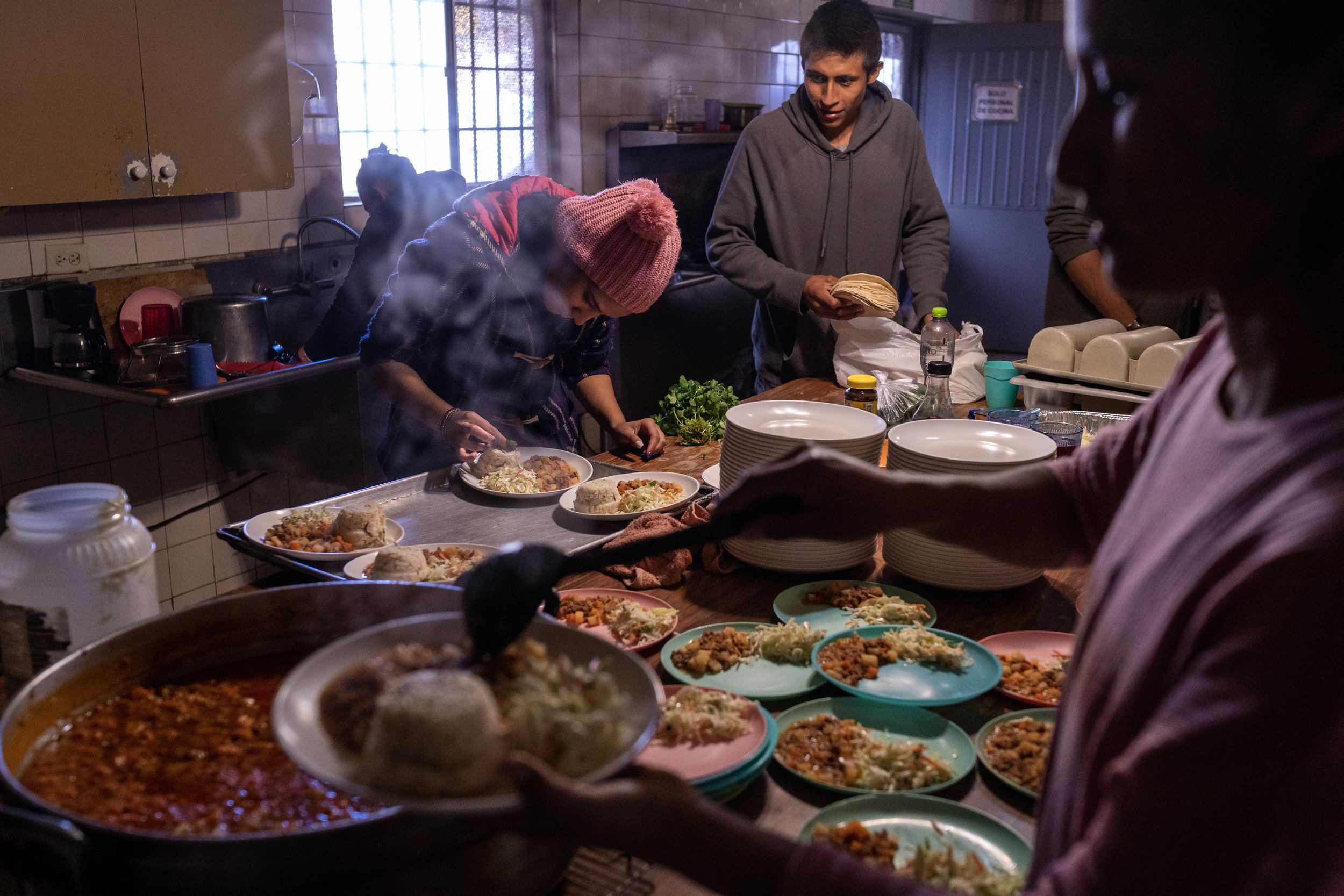
A group of migrants, who’s names have been omitted for safety concerns, help cook a meal for over 50 migrants at La Casa de Misericordia on Friday, Jan. 7, 2023, in Nogales, Mexico. The migrant shelter requires residents to contribute to daily tasks in order to build community as they navigate the asylum process.

Migrant children play soccer after finishing their classes at La Casa de Misericordia on Friday, Jan. 7, 2023, in Nogales, Mexico. The shelter is located in a more remote area of Nogales, close to where many other migrants live due to lower housings costs.
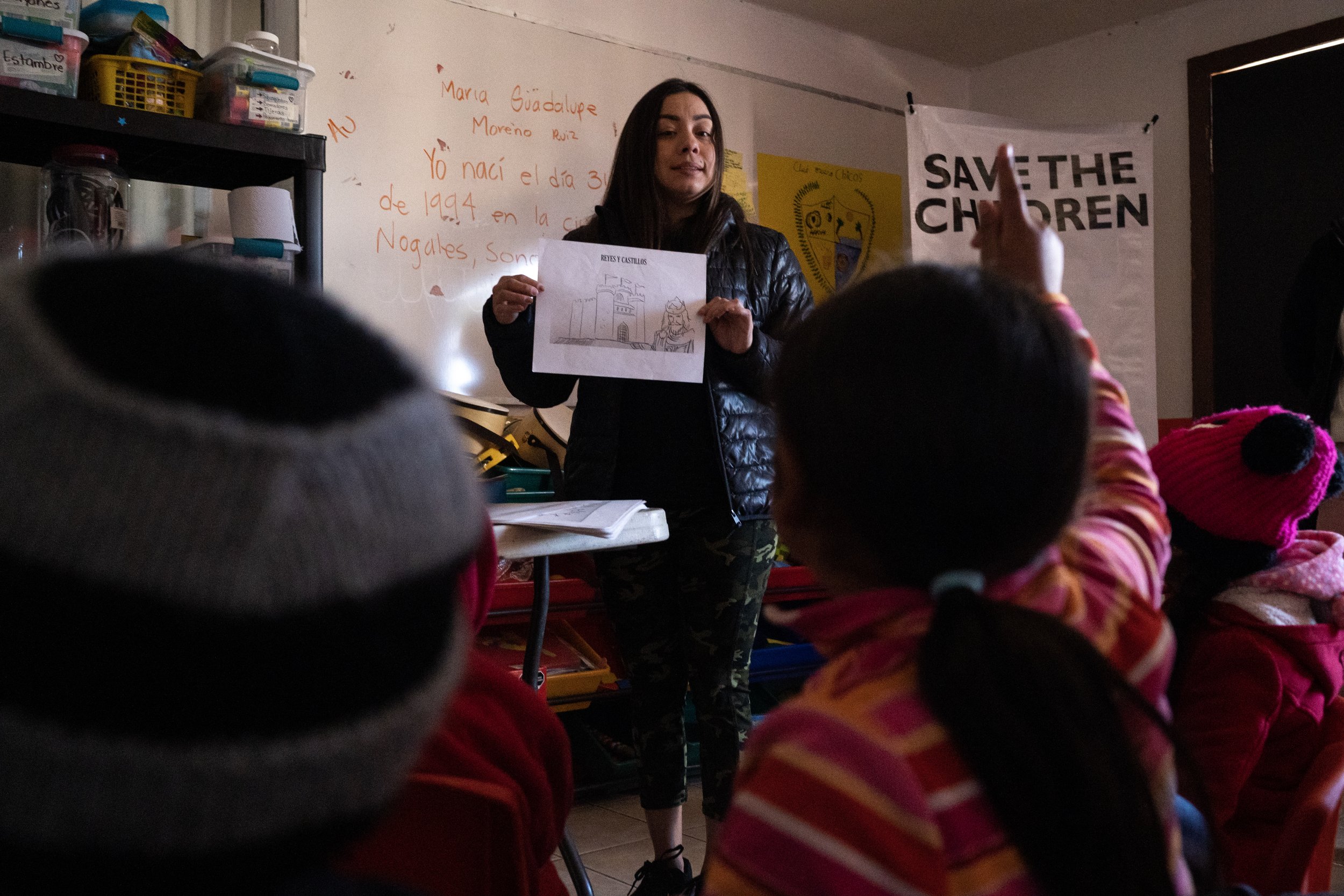
Maria Guadalupe Morena Ruiz asks a question to the class during a history class for migrant children staying at La Casa de Misericordia on Friday, Jan. 7, 2023, in Nogales, Mexico.
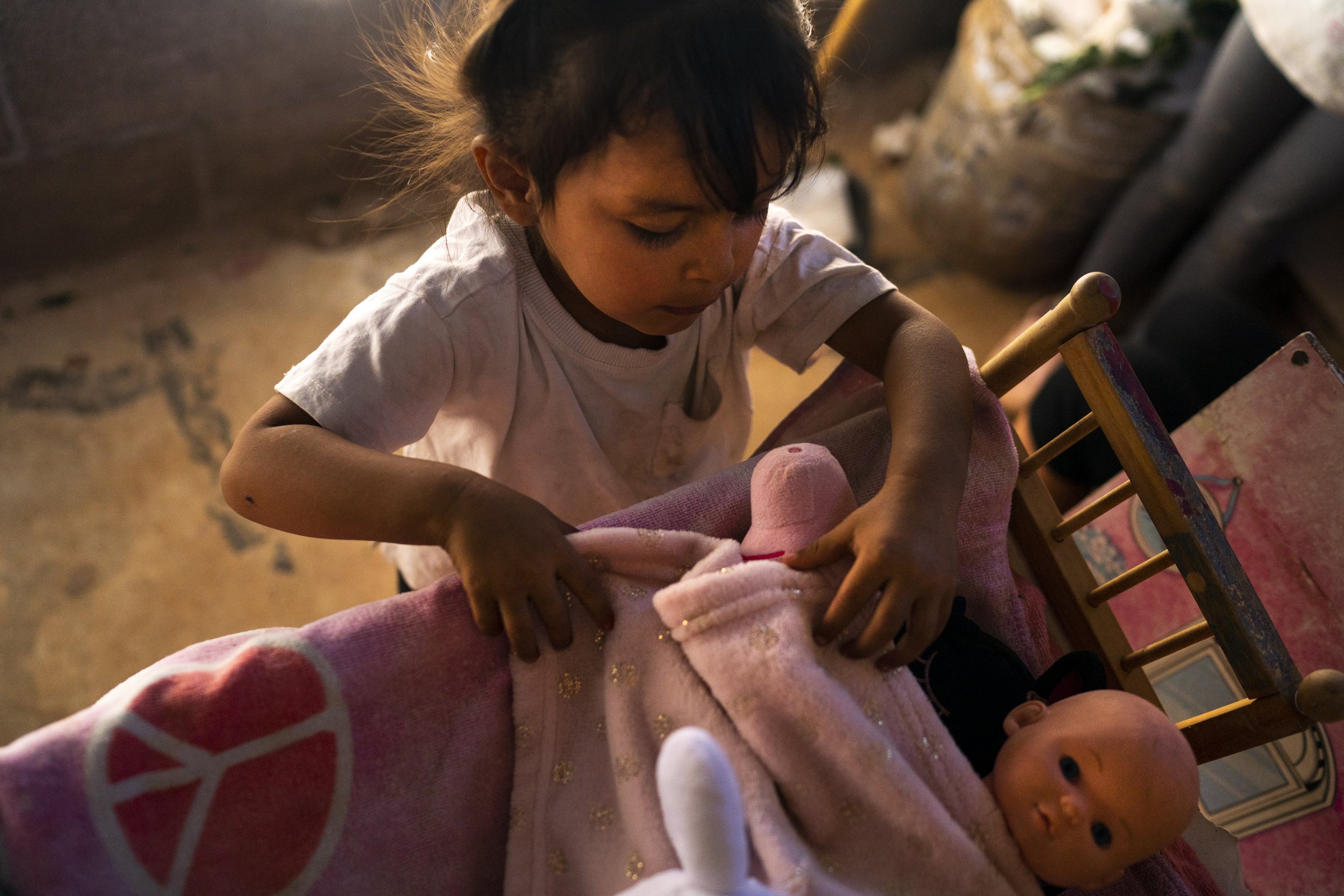
Amaya Delgado García, 2, tucks her baby doll into a crib at her home on the outskirts of Nogales on Monday, May 23, 2022, in Nogales, Mexico. Her family moved to Nogales to apply for asylum after her father was kidnaped by the cartel for four days. In June of 2020, just after Amaya was born, her family fled their small house in central Mexico to Nogales to apply for asylum like thousands of other migrants in the busy border town.

Migrant children and their families line up to receive Christmas gifts before heading to a hotel or to the airport while at Iglesia Cristiana El Buen Pastor on Thursday, Dec. 22, 2022, in Mesa. "It will be very difficult for them to celebrate Christmas in the subhuman conditions they are in right now, without food, out in the open in the cold, without a suitable place to live, let alone sleep, or celebrate Christmas. For those still on the border, there is no silent night,” Pastor Hector Ramirez said.
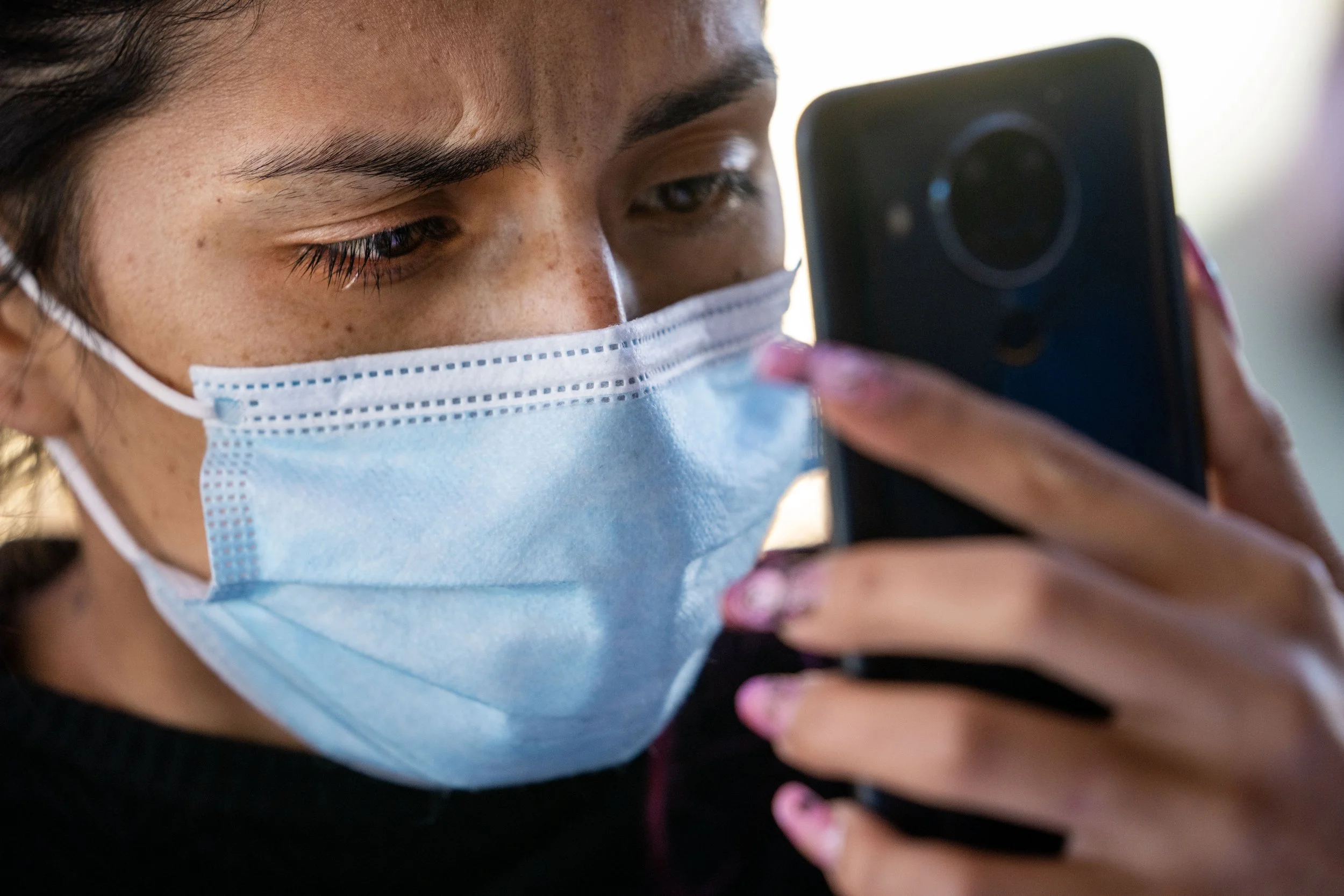
Karol Buitrago cries as she talks to her sister-in-law in Miami to update her on their travel schedule and safety while at Iglesia Cristiana El Buen Pastor on Thursday, Dec. 22, 2022, in Mesa. Buitrago, a nail stylist from Colombia, fled her home after her previous husband was murdered three years ago by criminal gangs on Christmas Eve. The family flew to Mexico and then took buses to the border. Criminal organizations that control the Mexican side charged them $800 each to cross into the U.S., a total of $3,500, she said.
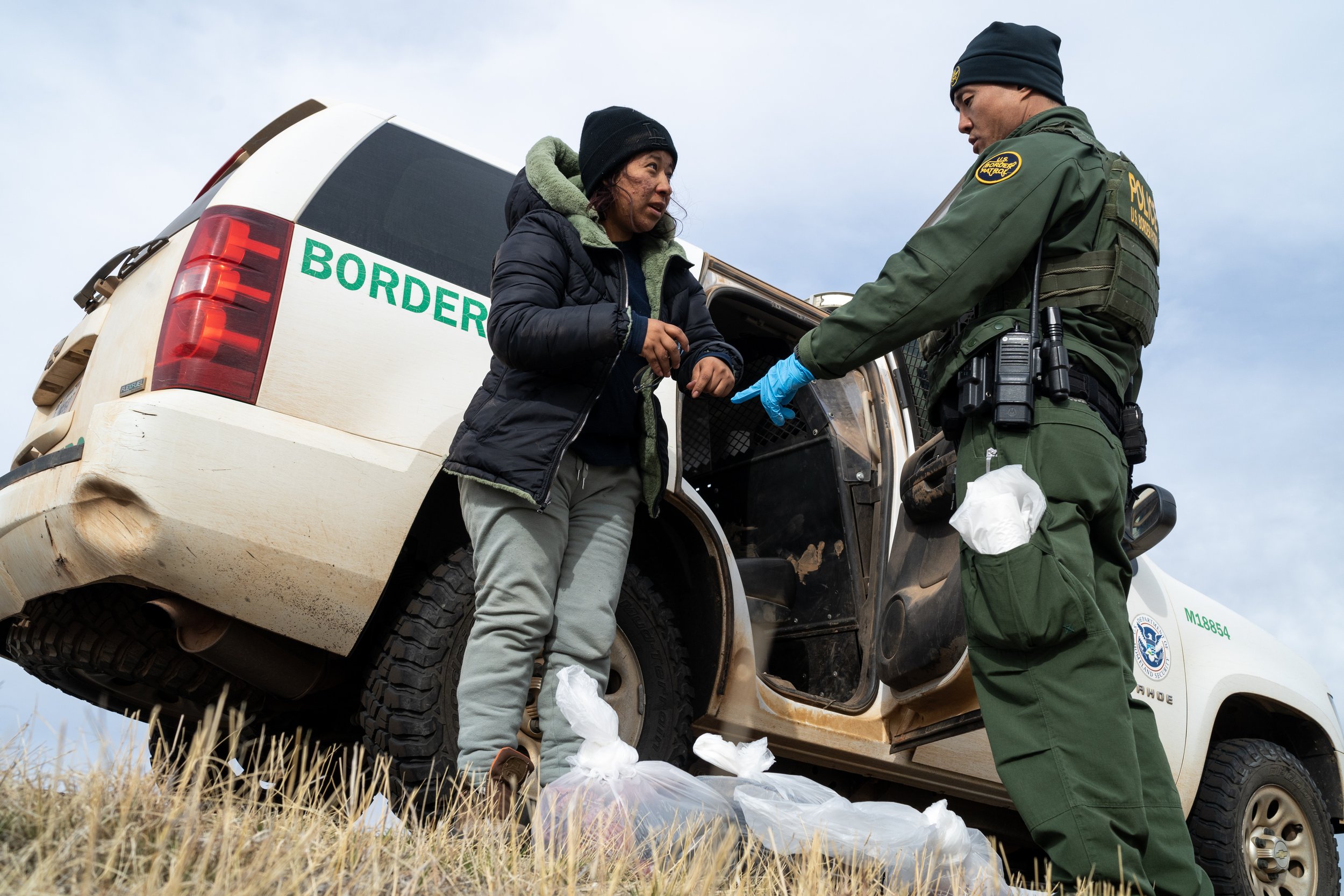
A migrant woman is detained by U.S. Border Patrol on suspicion of illegally entering the United States of America on Friday, Feb. 17, 2023, in Hereford. The woman, along with two other migrants, allegedly got into a car that was waiting for them on the side of the highway before being stoped by a Border Patrol agent. The largely rural Cochise County who’s main thoroughfare I-10 has seen an uptake in a distinctive manner of smuggling which consists of younger drivers recruited on social media and paid thousands of dollars to drive to the border to pick up unauthorized migrants and transport them to Phoenix or other larger cities.
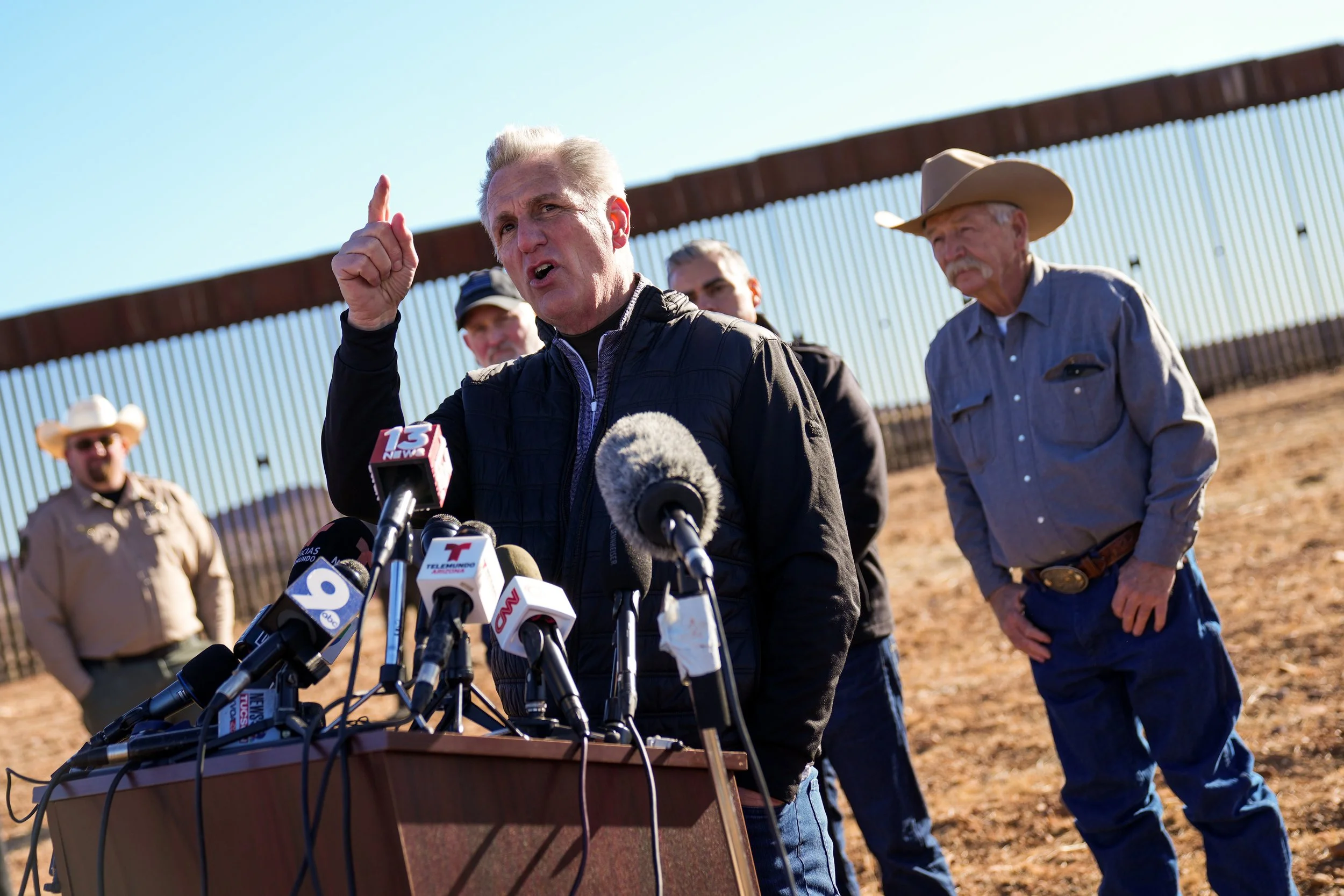
House Speaker Kevin McCarthy speaks during a press conference in front of the U.S.-Mexico border south of Sierra Vista on Thursday, Feb. 16, 2023, in Hereford.
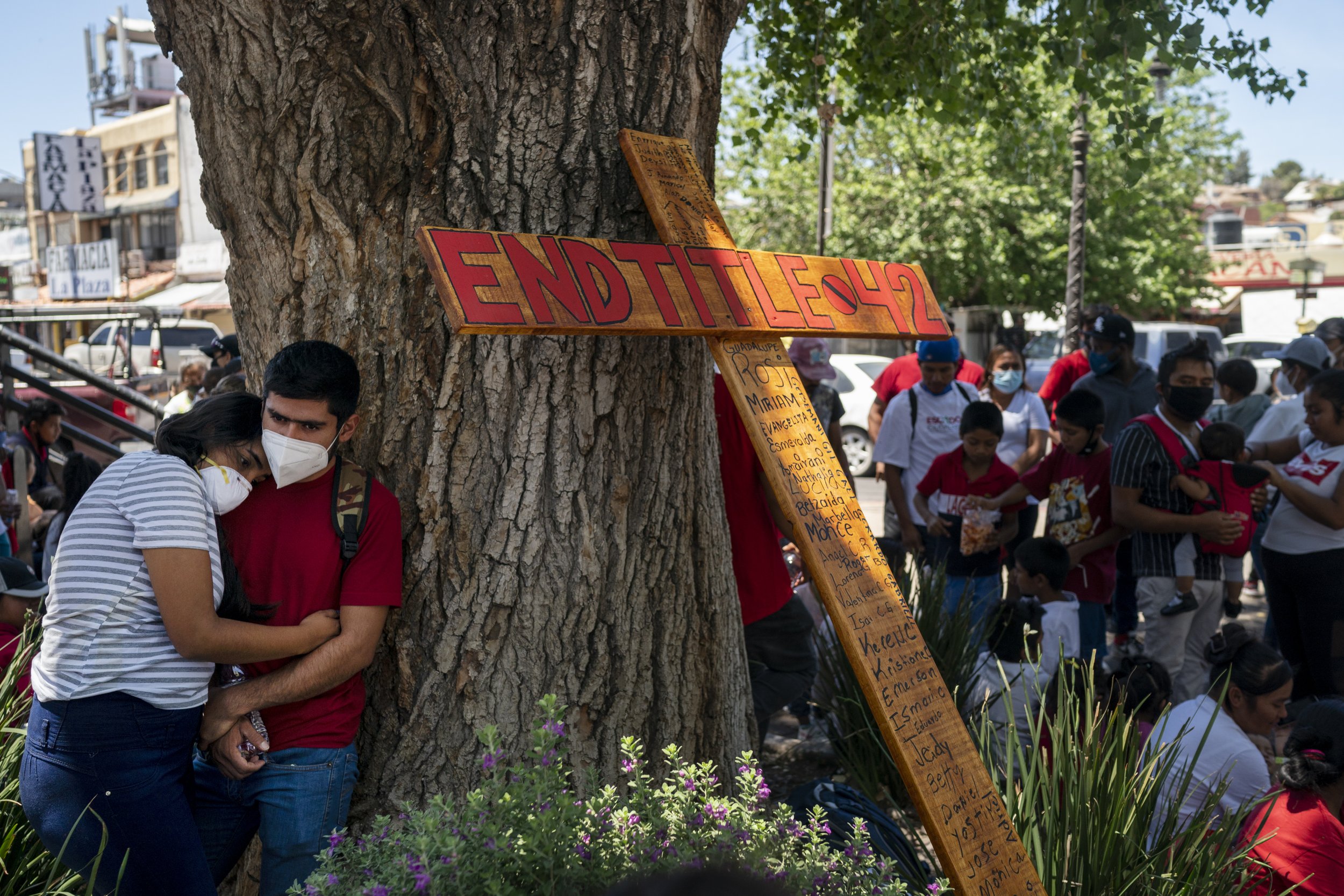
Elena Perez, left, and her husband Hernando Mondragon, of Michoacán, Mexico, hold each other during a vigil near the DeConcini port of entry for the continuation of Title 42 on Monday, May 23, 2022, in Nogales, Mexico. The couple arrived to Nogales fifteen days ago with the hope of seeking asylum in the U.S., but a federal judge in Louisiana ruled that Title 42, a Trump administration era public health order, must stay in place; making it difficult for migrants in Mexico to seek asylum to the U.S.
Since 2020, the United States has used Title 42 to expel undocumented migrants from the southern border. Originally designed to stop the spread of COVID-19, the statute has persisted as the go-to immigration law and created a bottleneck in the immigration system. Families are left in a cycle of limbo each time the Biden administration or the U.S. court system delays the measure’s expiration date.
Arizona exhibits some of the highest number of crossings in the country, particularly through the border towns of Nogales and Yuma. Of the families that are able to cross, asylum is an arduous process. Countless other families are stuck in Mexico and rely on nonprofits as a means to survive.